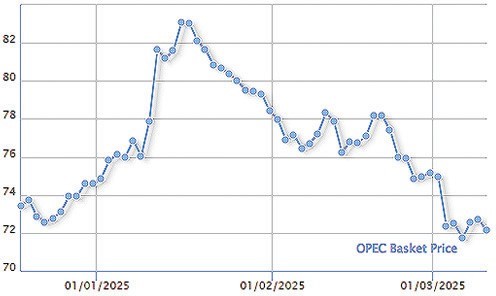February 2, 2024
In a spate of rocket activity, the Islamic Republic has orbited its highest satellite yet, put three satellites into orbit with one rocket and launched its first test of an empty space capsule designed to carry humans into space, while saying it plans to send its first man into space in five to six years.
 Only three countries have thus far put men into space Russia, the United States and China though India has an active program and plans to orbit a man in a few years.
Only three countries have thus far put men into space Russia, the United States and China though India has an active program and plans to orbit a man in a few years.
A satellite dubbed Soraya was placed into orbit January 20 aboard a new and more powerful rocket, Qaem-100. The satellite only weighs in at 50 kilograms, not Iran’s biggest but it was put into an orbit 746 to 763 kilometers above the earth. None of the previous satellites orbited by Iran has reached 500 kilometers high. The orbit height was verified by n2yo, an American website that monitors all satellites.
Soraya is the fourth satellite lofted by the Pasdar aerospace arm. Most satellites have been lofted by Iran’s civilian space agency.
The higher altitude for the latest satellite suggests Iran is now able to build missiles with a greater range than claimed before and perhaps hit targets in Western Europe. This got the attention of some Western countries. Normally, only the United States complains after Iranian satellite launches that the technology used to loft satellites can be applied to bigger and longer range missiles carrying warheads. This time, France, Germany and Britain issued a joint statement for the first time condemning the Iranian space program, saying the Qaem-100 uses the technology needed for long-range ballistic missiles.
As for the space capsule tested earlier, the Iranian government said it weighed 500 kilograms (1,100 pounds), which would make it just one-third the size of the Mercury capsule, which was the first to carry an American into space more than six decades ago.
The US launched its first astronaut into space in a Mercury capsule May 5, 1961, just 20 months after first sending an empty Mercury into space (and three weeks after the first Russian was launched into space). The fact that Iran is saying it will take five to six years to get a man into space suggests this test capsule is not really a finished design like the Mercury and is really just a test bed. In fact, officials said they are now working on a rocket launcher capable of carrying a capsule weighing 1,500 kilos, the size of the Mercury capsule.
Many news reports said the latest Iranian space capsule was put into orbit with animals aboard. Neither was true. Iran said this was a “sub-orbital” test meaning the capsule just flew a short distance down-range and never went into orbit. Iran also said the capsule was “capable” of carrying animals, but it never said this launch included any animals.
The capsule was launched aboard a brand-new Iranian rocket named Salman, which was built by the Defense Ministry, not by Iran’s civilian space agency, nor by the Pasdaran. The capsule was designed and built by the civilian side of the space program. The government did not describe the specifications of the rocket except to say it could launch 500 kilograms into orbit. Iran has thus far never orbited any satellite exceeding 113 kilos.
The government said the Salman rocket carried the capsule to an altitude of 130 kilometers (80 miles), while the lowest possible altitude to go into orbit is 160 kilometers.
Then on January 28, Iran fired a Simorgh rocket, built by the Defense Ministry, that carried three satellites into orbit. It was the first time Iran had put more than one satellite into orbit from a rocket. Two of the satellites Kayhan-2 and Hatef-1 were described as nanosatellites, which means they weigh between 1 and 10 kilos. The third, named Mahda, was described as weighing 32 kilos, which is also a very small satellite. But none of the names correspond to satellites Iran has long listed as awaiting launching.
As of the Iran Times publication date, n2yo had still not confirmed that any of those three satellites had gone into orbit, although Iran said all were in orbit.
The Simorgh previously was used to fire four satellites into orbit, but all four launches failed so some upgrades to Simorgh have clearly worked.
Iran said the two small satellites were testing narrowband communications and geoposi-tioning technology.
If the last three satellites all made it into orbit, Iran now has eight satellites circling the earth two launched by Russia and six launched by Iran.
Iran’s space program was suspended by the Rohani Administration, which didn’t see many benefits from it, especially when it soaked up a lot of money in a tightly constrained budget. The Raisi Administration revived the program when it came to power in 2021.
The government released film of the space capsule launch taken from several different angles and locations. However, it released no film of the recovery of the capsule, leading some to speculate that the landing had not gone well. The government earlier announced that it plans to launch five satellites into orbit in the remaining weeks before Now Ruz. It said two would be launched by the Pasdaran, two by the Defense Ministry, none by the civilian space agency and one “from abroad.” Iran has a contract with Russia for the launch of satellites, mainly ones too big for Iranian rockets to get into orbit. Four of those planned five satellites have now been launched.





















